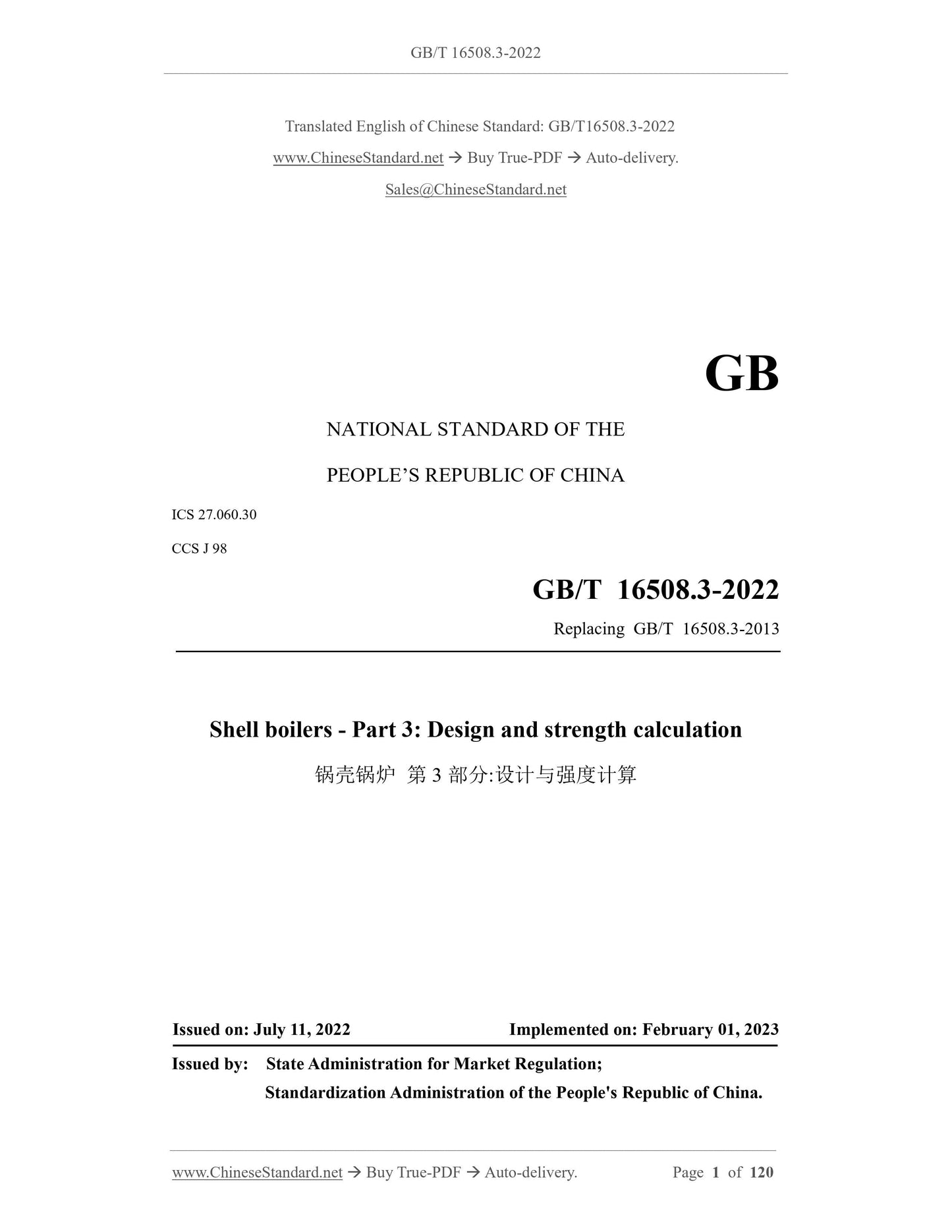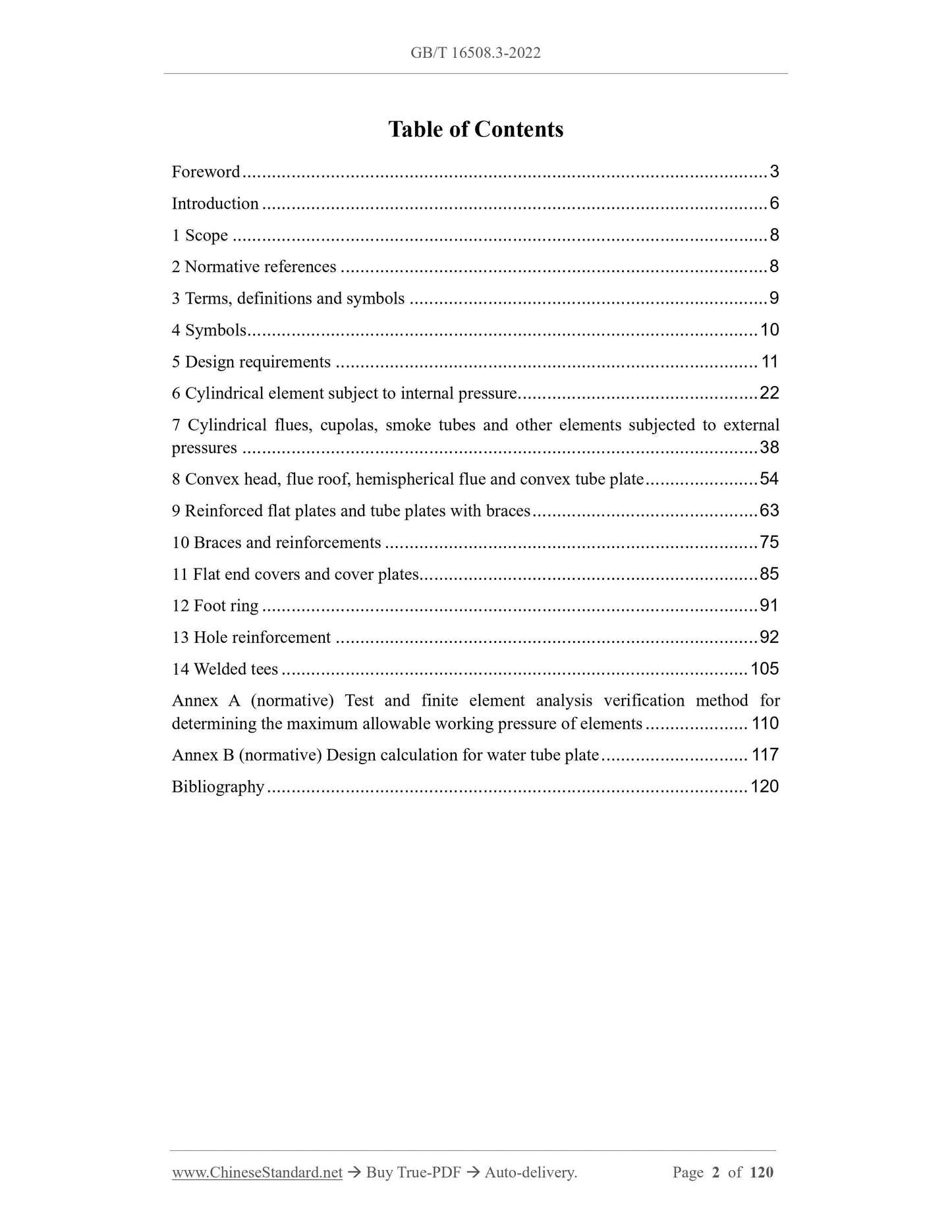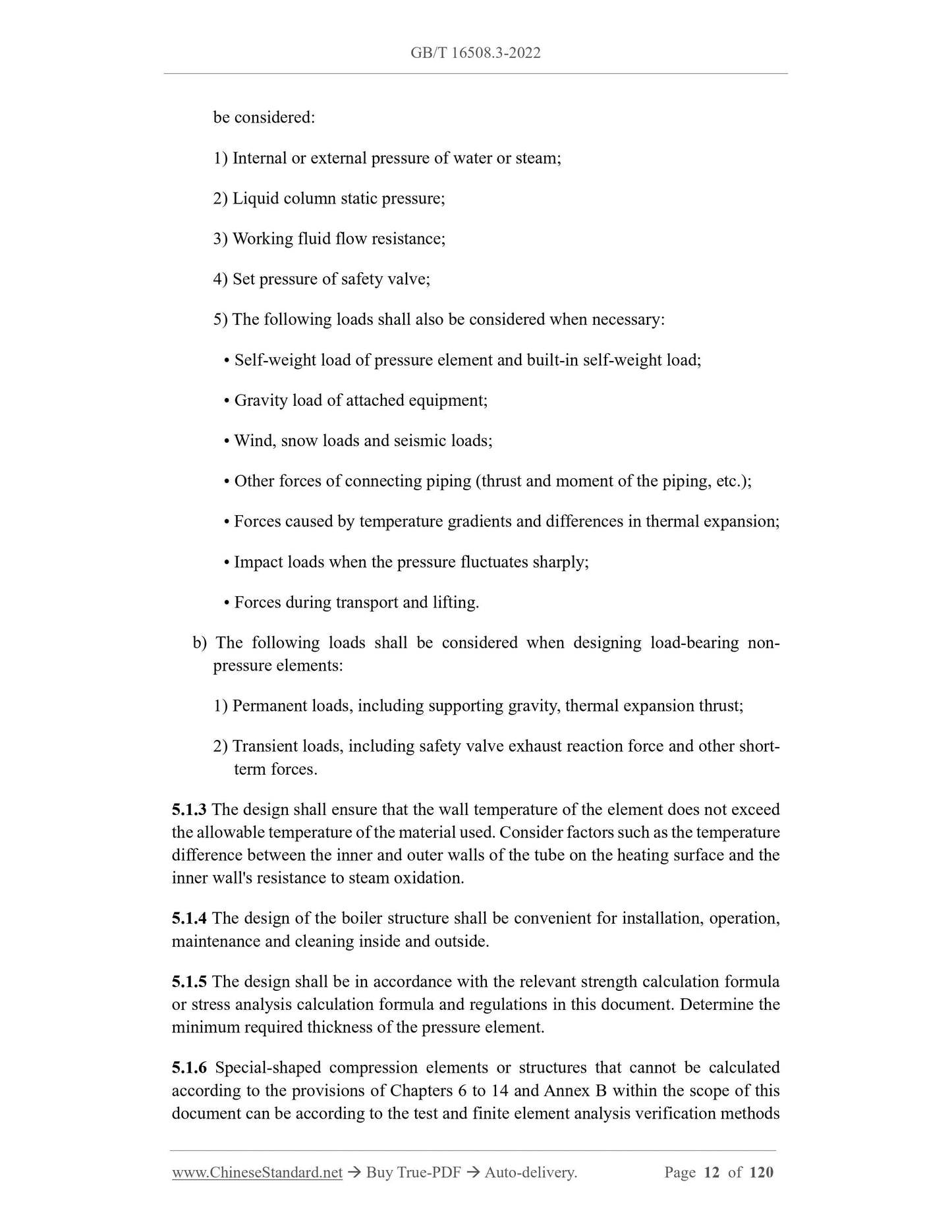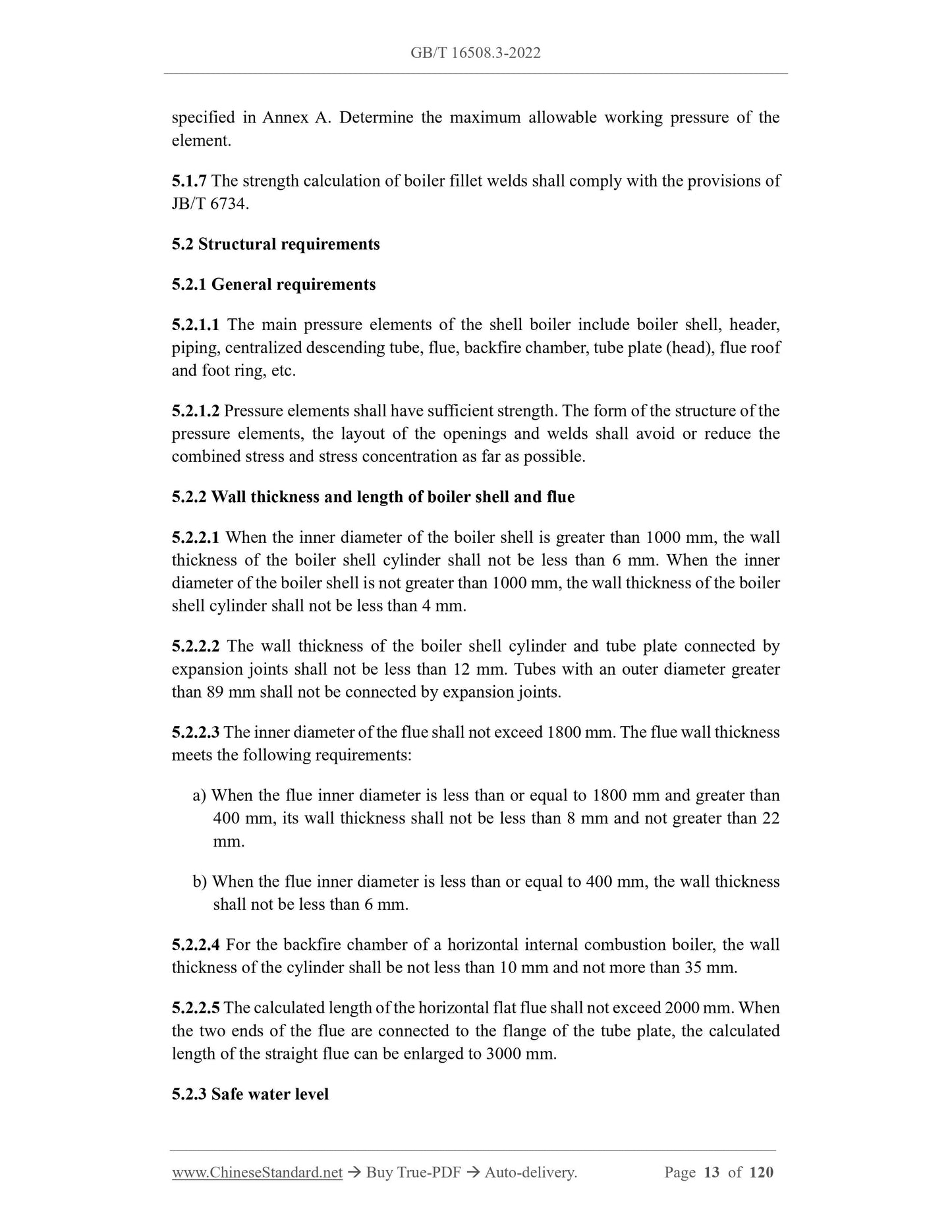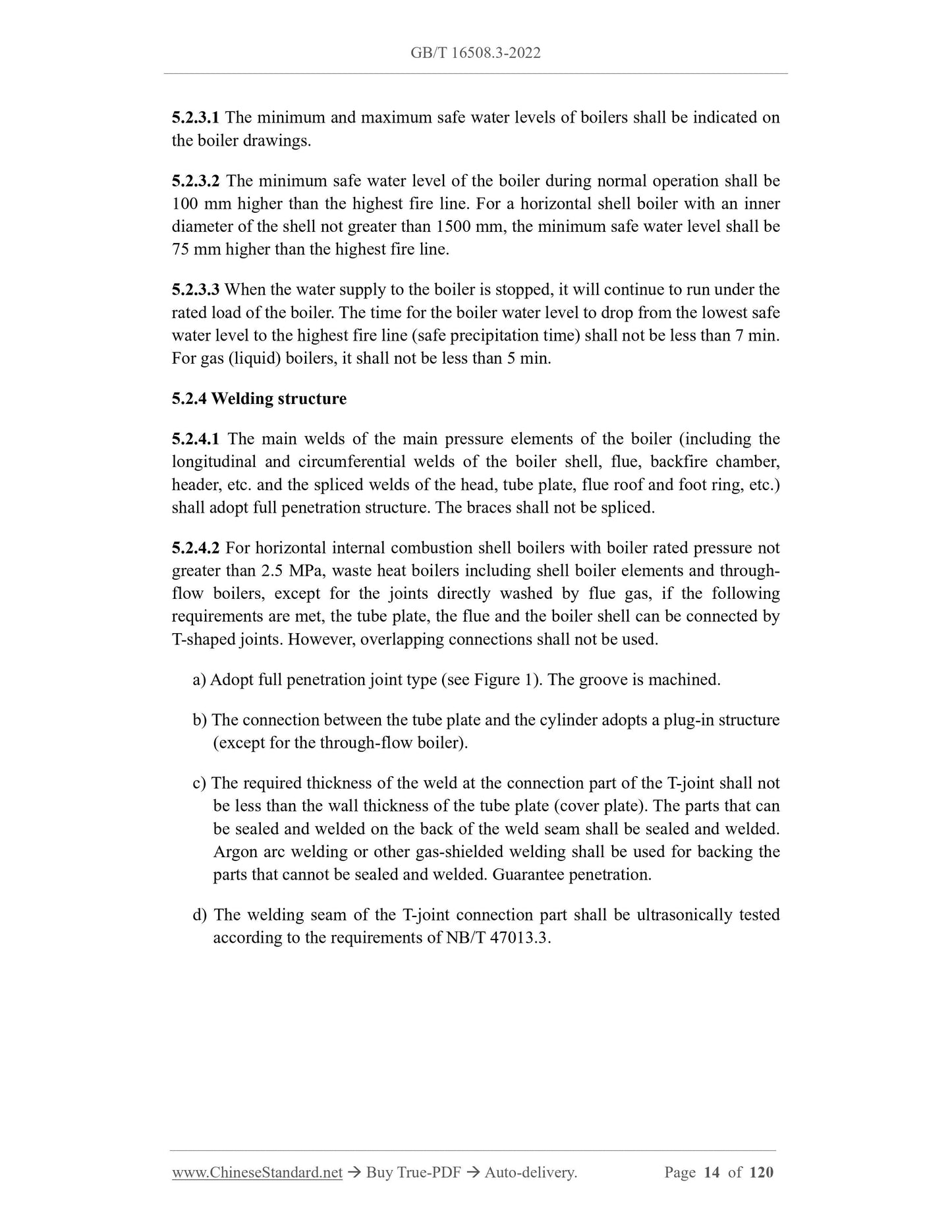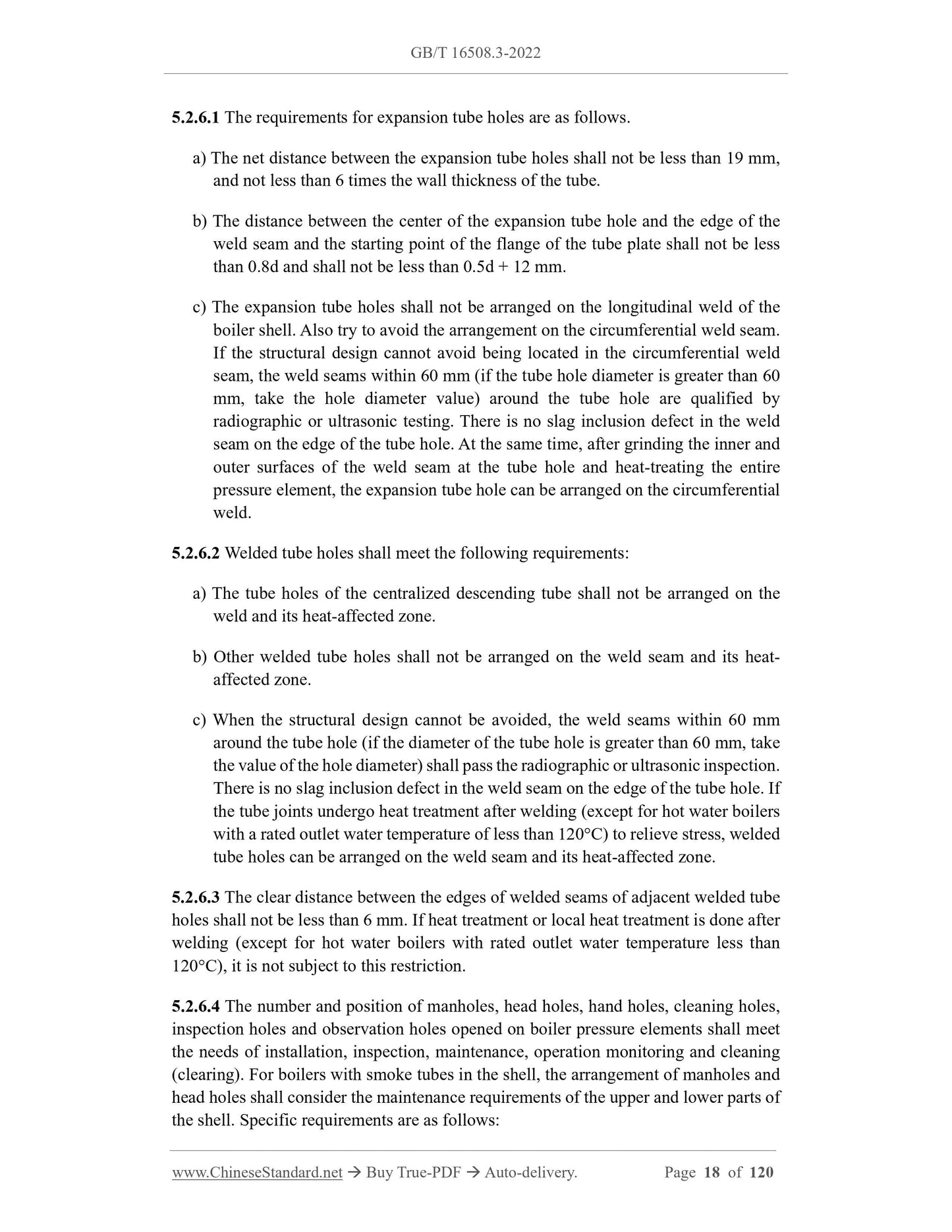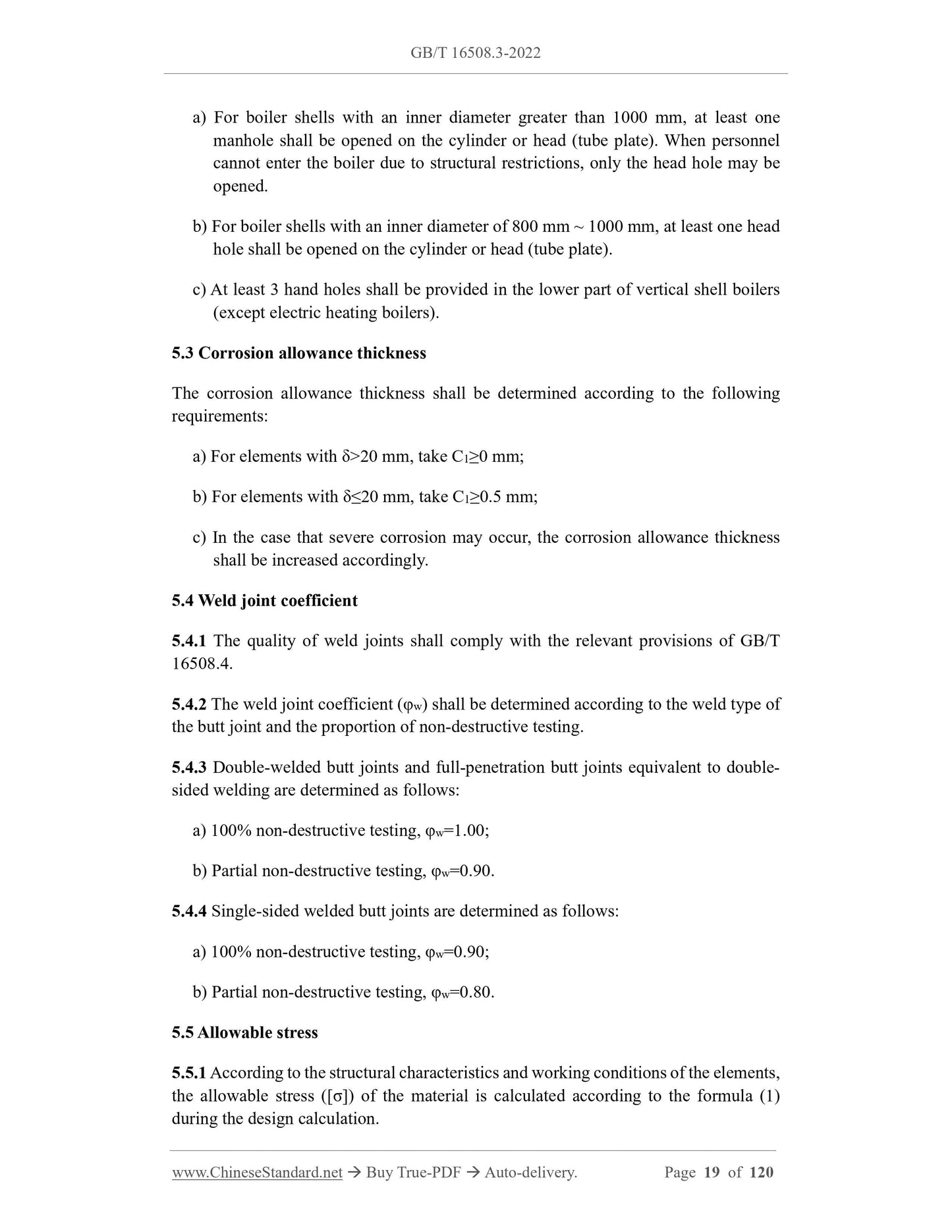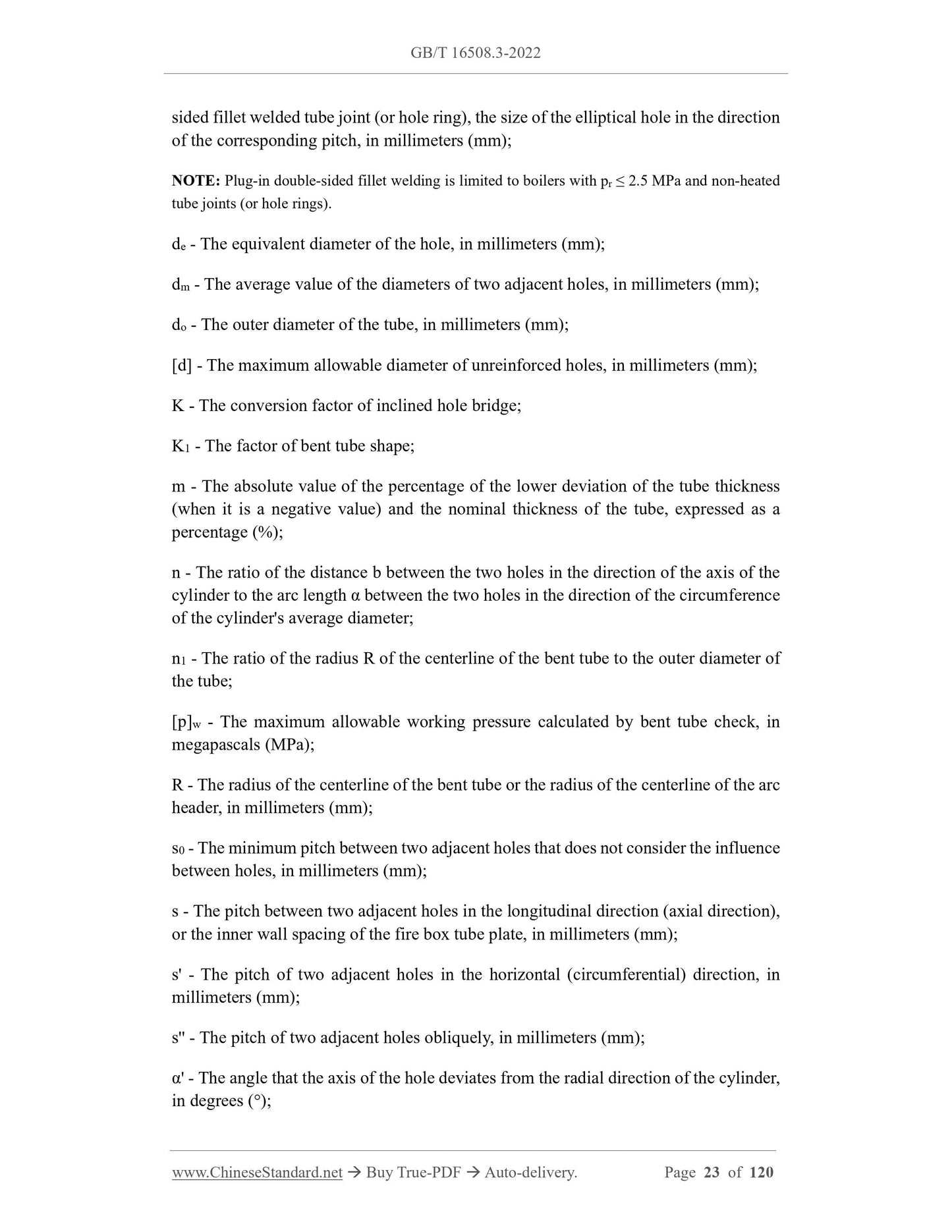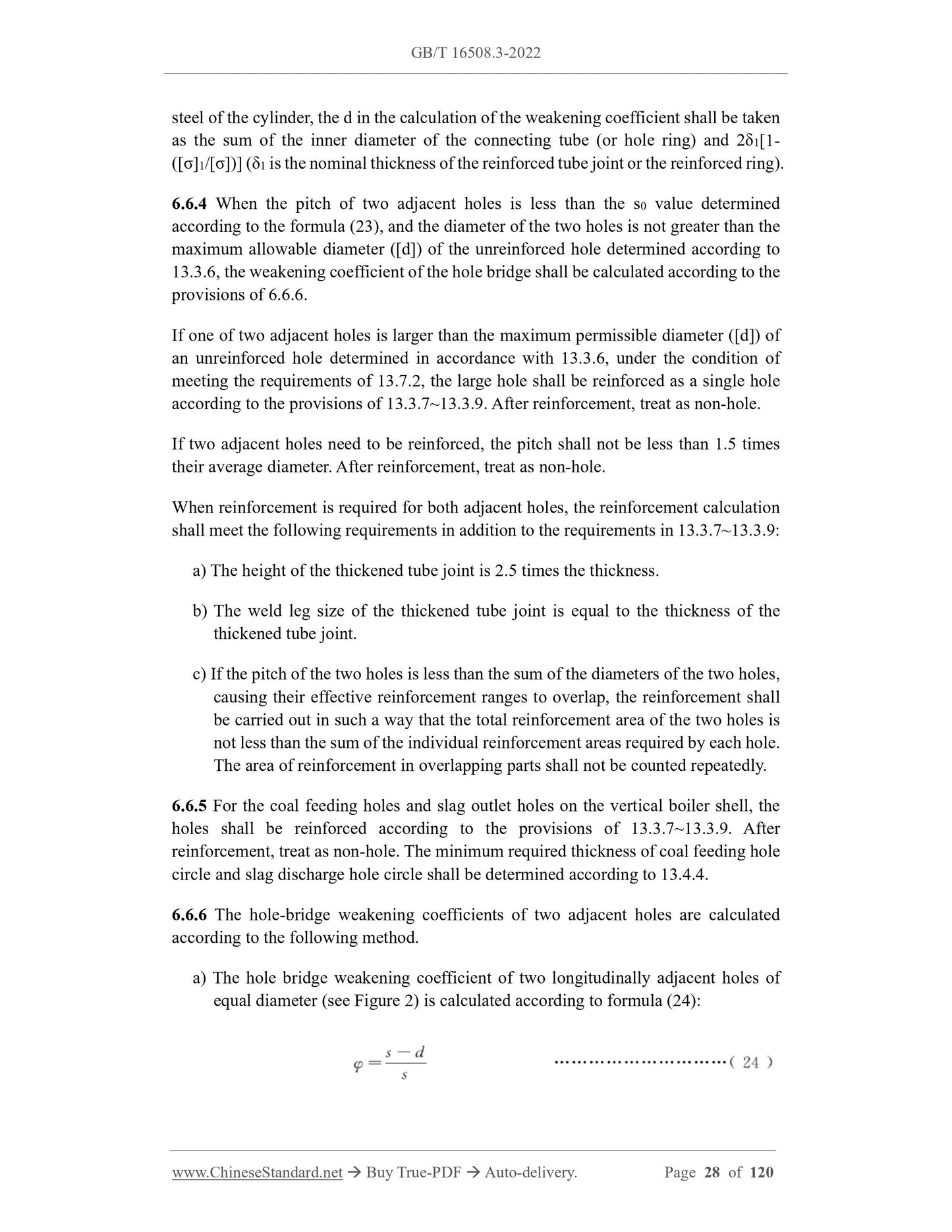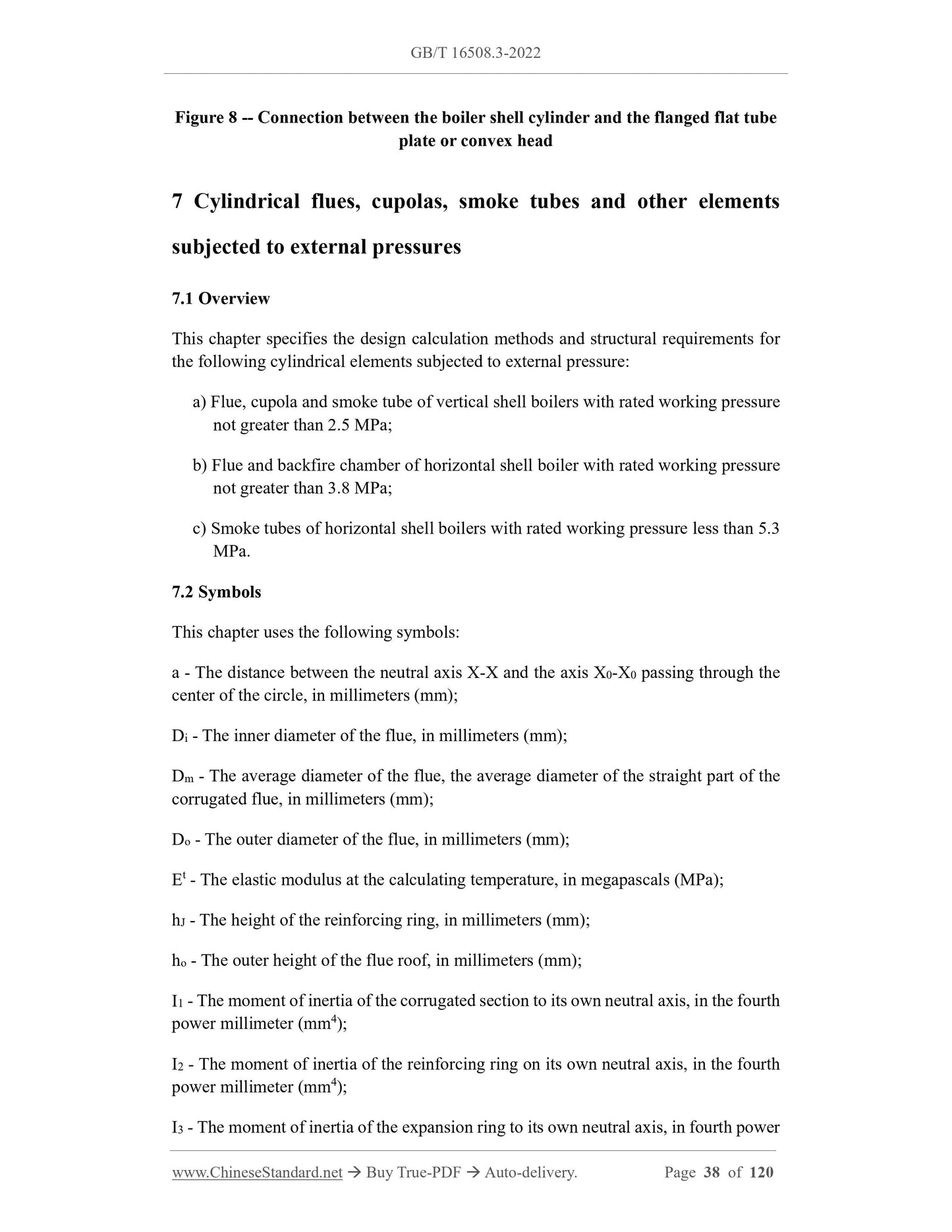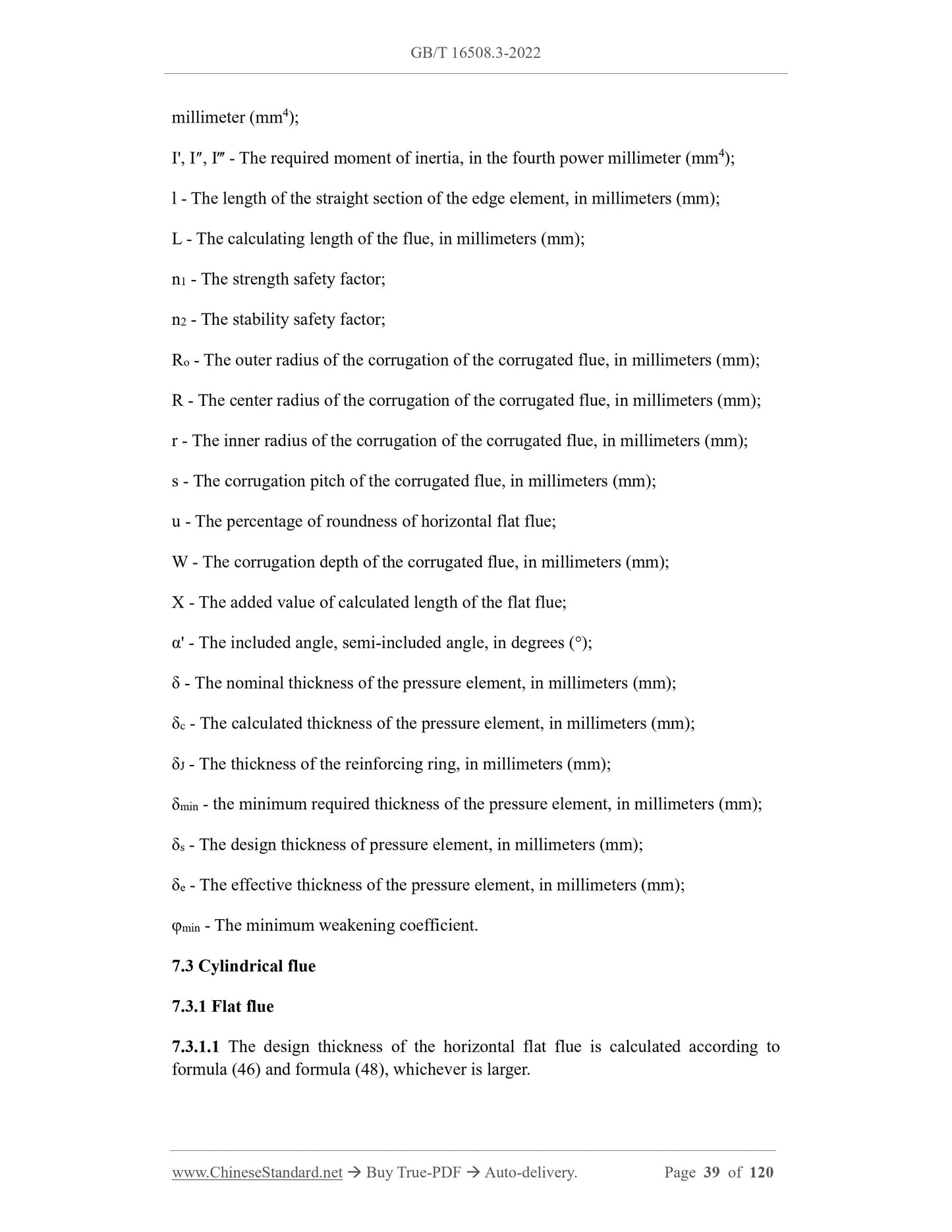1
/
of
12
www.ChineseStandard.us -- Field Test Asia Pte. Ltd.
GB/T 16508.3-2022 English PDF (GB/T16508.3-2022)
GB/T 16508.3-2022 English PDF (GB/T16508.3-2022)
Regular price
$1,055.00
Regular price
Sale price
$1,055.00
Unit price
/
per
Shipping calculated at checkout.
Couldn't load pickup availability
GB/T 16508.3-2022: Shell boilers - Part 3: Design and strength calculation
Delivery: 9 seconds. Download (and Email) true-PDF + Invoice.Get Quotation: Click GB/T 16508.3-2022 (Self-service in 1-minute)
Newer / historical versions: GB/T 16508.3-2022
Preview True-PDF
Scope
This document specifies the design requirements and strength calculation methods forpressure elements of shell boilers. It also specifies the test and finite element analysis
verification methods for determining the maximum allowable working pressure of
elements.
This document is applicable to the design of pressure elements of shell boilers defined
in GB/T 16508.1 [including cylindrical elements bearing internal (external) pressure,
heads, tube plates, end covers, foot rings, etc.] and braces.
Basic Data
| Standard ID | GB/T 16508.3-2022 (GB/T16508.3-2022) |
| Description (Translated English) | Shell boilers - Part 3: Design and strength calculation |
| Sector / Industry | National Standard (Recommended) |
| Classification of Chinese Standard | J98 |
| Word Count Estimation | 75,755 |
| Issuing agency(ies) | State Administration for Market Regulation, China National Standardization Administration |
Share
